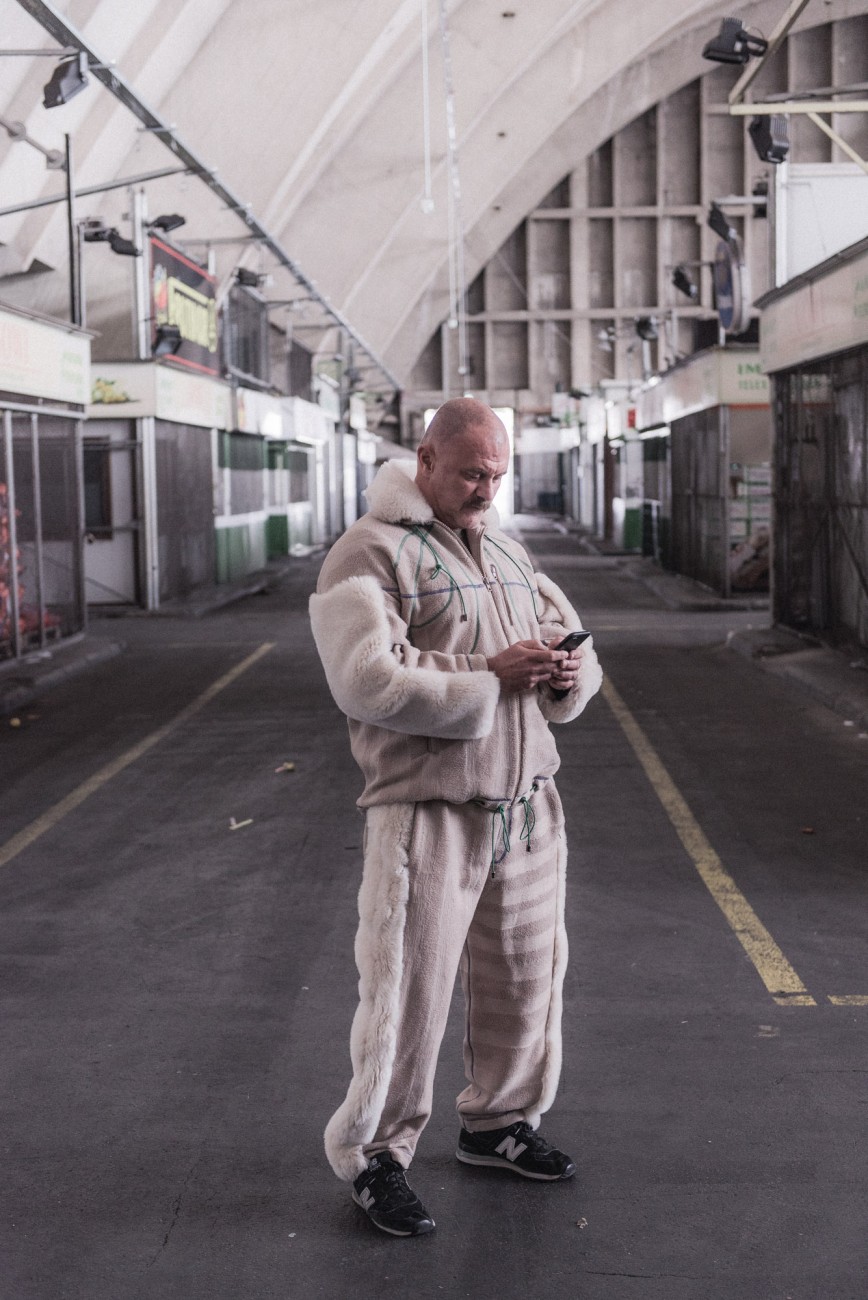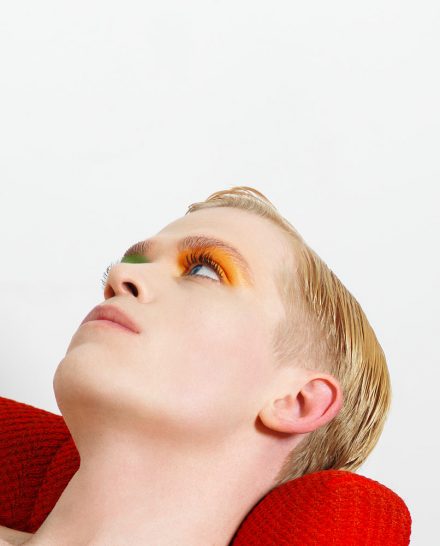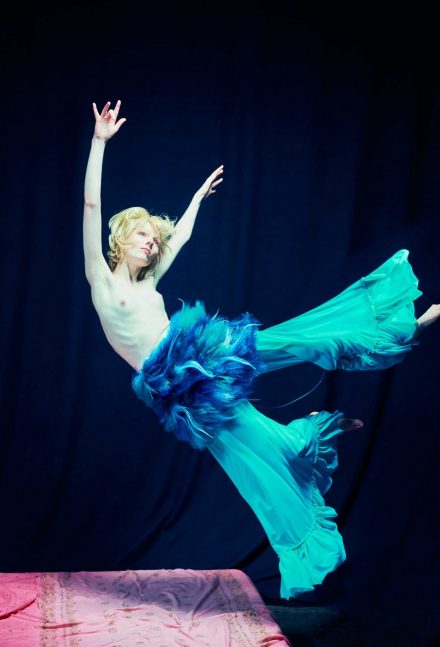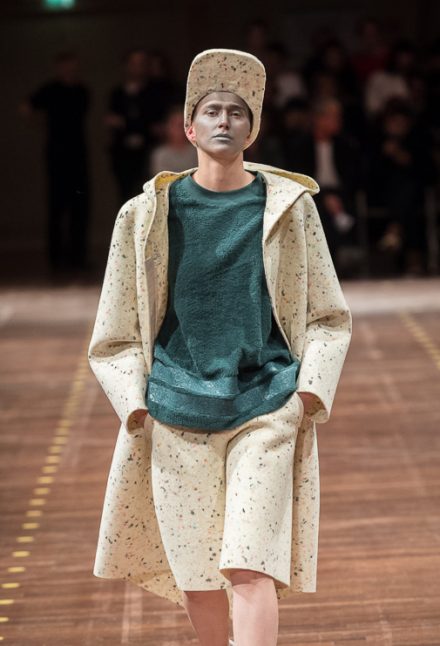Last week we already introduced a few of our favorite UdK graduate collections. Today, we view three more , and closely look at the message and concept behind them. Along with Lisa Mann, Julia Bajanova, and Florian Máthé, the show at Estrel’s fancy convention center in Neukölln, also included some remarkably topical projects.
To gain a better understanding of what inspired these collections oscillating between eccentric and eye-catching, we asked the designers to share their thoughts on their topical approach and rather conceptional designs.

Lisa Mann – Freddy and Daddy
The cast of Lisa’s presentation transported us out of Estel’s polished walls and directly onto the streets of Berlin, where male models of different ages showed us how ordinary street-wear, business suits, and high fashion can be united. Talking about her ideas, Lisa explained that it was her dad, with his looks and views on fashion, who inspired the collection’s focus. After closely studying masculine work-wear, Lisa got together with her father and other men of the same age to discuss the stereotyped image of the male suit.

Upon collecting feedback from the men, Lisa decided to showcase her study by bringing a variety of younger and older men, wrapped in work-wear inspired pieces, to the runway. In doing so, the intention was to “create more opportunities of staging and presenting for men of all ages. I want to include more drama into their looks and hope to encourage them to try out different things”, Lisa told us. The men in her show reminded us of passersby at the metro station or the neighborhood Späti, and thus represented the main recipients of the collection.

Being her collection’s point of departure and the first model to step down the catwalk, Lisa’s dad played an important role in her work that was named after his favorite musician, Freddy Mercury. Overall, Lisa described the collection as a “case study exploring new types of masculine expression, and a comment on men’s clothing as perceived by a female menswear designer.“ According to her statement, we understood the presentation as an experiment and a contribution to broadening the horizons of men’s high fashion, beyond traditional suits.
Julia Bajanova – Bodies that shatter
Characterized by a critical view on society’s beauty standards, Julia’s collection takes a stand against skinny bodies and perfect skin. It was the work of feminist theorist Judith Butler that inspired the background to her pieces. After studying her book „Bodies that Matter“ a title for Julia’s collection was found. Her designs built upon the thought that bodies are not fixed and unchangeable but instead appear in a variety of shapes and performances.

Her pieces are defined by the alternation between fabric and holes that expose and highlight particular parts of the body. By doing so, Julia refers to blogger culture and social media profiles, where body parts are frequently displayed. Like those images that formed a point of reference for her work, Julia’s collection comments on the expectations that are often enforced upon the female body by showing a similar fragmented view of bodies in her clothes. The upshot is what she summarizes as a „feminist praxis in fashion.“ Her ideas also become manifest in the use of dark colors, the asymmetric silhouettes, and the numerous cut-outs that lead the viewer’s gaze. „Melancholia, eros, power, provocation, and autonomy“ are the words used by Julia to describe the feelings arising by looking at the fragmented confections.

Florian Máthé – Hannelore
Hannelore is a transgender persona described in a 1940s Claire Waldoff song. Florian used this character as a namesake for his collection that caught our attention because of the distance it created between the models and the public. Talking about his pieces, Florian told us that the arrogant attitude of the models was meant to create an unapproachable projection of the chosen character. The topical background of Florian’s collection was stressed both by the genderless clothes, and the individual silhouettes of the models: “I wanted to show a person that is absolutely confident about performing non-binary gender, and looks natural in doing so.”

Colorful latex paired with more traditional fabric like velvet dominated the pieces while the confidence of his models outshadowed associations of oppression in gender fluid performances. Despite first impressions, what first appeared to be an impersonal drag performance, revealed itself as a project drawn from a personal place: „For a long time I adapted to society’s gender norms because I was very shy. At one point I realized that there was more then what I had shown so far.“ Furthermore Florian selected some of his friends to parade his collection down the runway.






